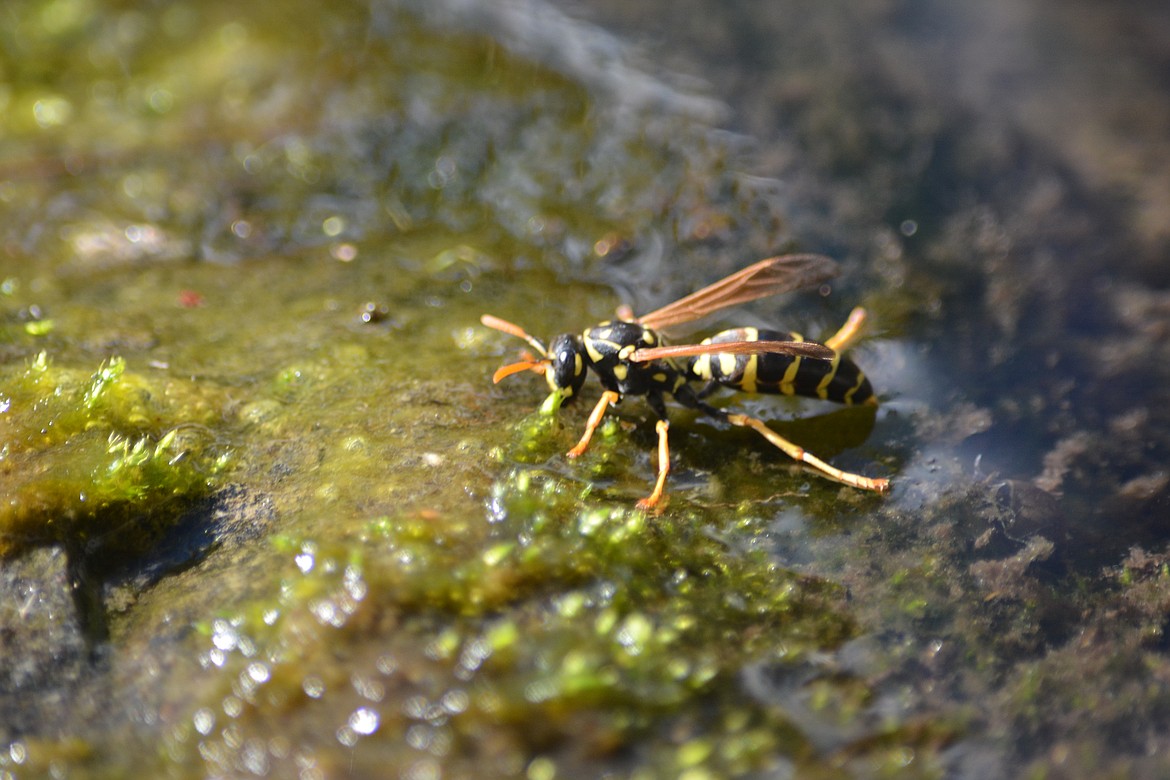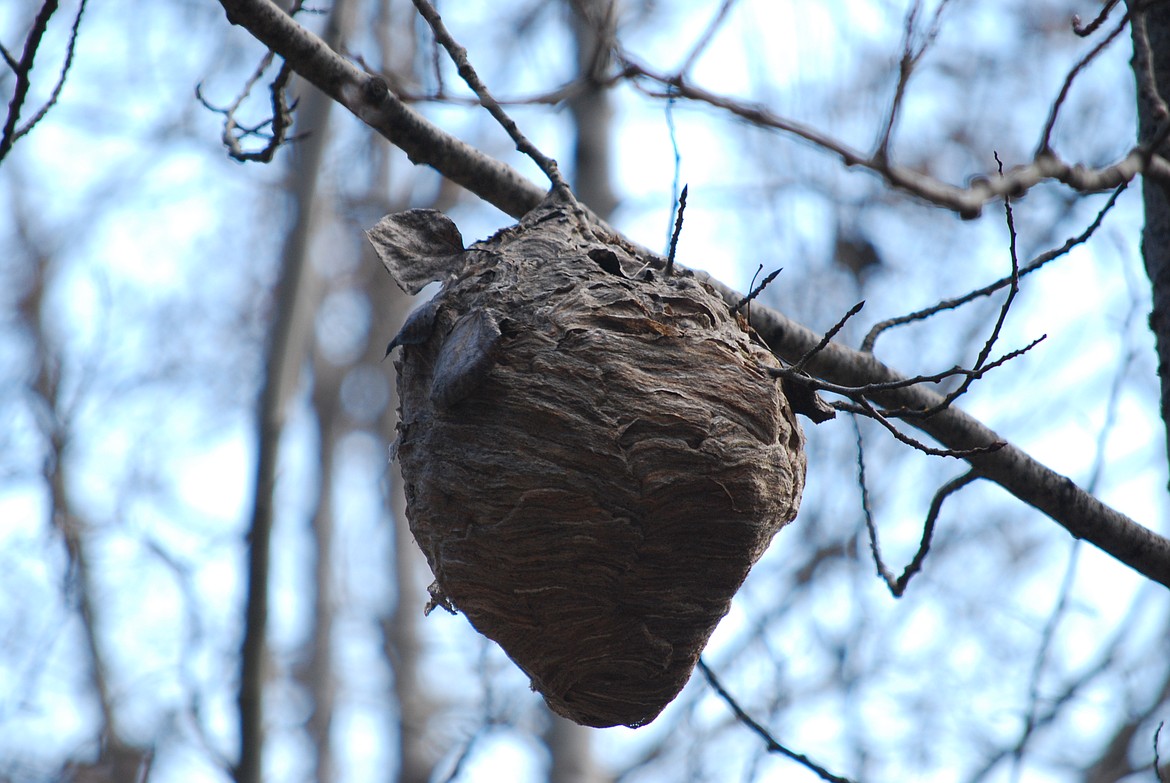What's the buzz? Yellow jackets, wasps
BONNERS FERRY — Yes, I have found through a “stinging” introduction that the yellow jacket is a North Idaho predatory insect that builds a large nest to house the colony. My first encounter with a yellow jacket in Boundary County was when I was trying to plug in my waterfall pump and failed to realize wasps were building a small nest in the secluded area around the electrical plugin. I was stung three times in the thumb before I could say “I’m outta here."
Yellow jackets are wasps that can be identified by their alternating black and yellow body segments and small size. They are often mistaken for bees, although their bodies lack the same amount of hair, the rounded abdomen, and the expanded hind leg used for carrying pollen. These social wasps live in colonies that may contain thousands of insects at a time.
Behavior, diet and habits
Yellow jackets are pollinators and may also be considered beneficial because they eat beetle grubs, flies and other harmful pests. However, they are also known scavengers who eat meat, fish and sugary substances, making them a nuisance near trash receptacles and picnics.
Many yellow jackets are ground-nesters. Their colonies can be found under porches or steps, in sidewalk cracks, around railroad ties or at the base of trees. Sometimes the queen uses a wall in an abandoned building as a nesting place. Some yellow jackets build aerial nests in bushes, low-hanging branches, or in the corners of buildings and other man-made structures.
Building nests
In the spring, the yellow jacket queen collects wood fiber to make her nest. The nest is constructed of paper-like material made from chewed wood fibers mixed with saliva. Some species build the nest in old burrows underground, while others build nests in or around houses.
The nest contains multiple layers of paper cells that look like the honeybee’s comb. The nest is started by a single queen, called the foundress. Nests are built every year. The abandoned nest is often destroyed by birds searching for food.
Reproduction
A queen yellow jacket starts a new nest by building a small paper nest in which she lays the first batch of eggs. After hatching, she feeds her eggs until they are ready to pupate and mature into adult yellow jackets.
A colony may contain 1,000 or more workers by fall. All of the workers are sterile females. In late summer males will begin to appear. When they become adults, they will mate with the females that will become the next year’s queens. The fertilized females will hibernate through the winter. The workers and the males will perish when the weather turns cold.
Yellow jacket stings
Known to be aggressive defenders of their colonies, yellow jackets are otherwise not quick to sting. The sting of a yellow jacket is painful, and each insect is capable of delivering multiple stings because they are equipped with lance like stingers with small barbs, unlike the larger barbs in honey bees. Yellow jacket stings may induce severe allergic reactions in some individuals.
Did you know?
n Yellow jackets live in large groups called colonies.
n Nests provide shelter for thousands of yellow jackets.
n Drones come from non-fertilized eggs. Since drones are males, they have no sting.
n Female wasps will sting repeatedly to protect the colony.
n Most wasps feed on insects, while bees rely on a diet of nectar or pollen.
Of course anytime you get stung, it is a bad wasp summer. After a sting, I can’t get to the wasp spray fast enough. I’ve been simply giving my “jackets” some space. No stings yet this summer, and with the advent of cold weather in a few months, they will be gone, but for right now we have an abundance of yellow jackets.
Enjoy the summer but beware of the wasps!
For more articles visit www.naturallynorthidaho.com





